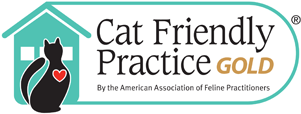Library
-
Feline eosinophilic keratitis is a chronic inflammatory disease of the cornea that results in the surface of the eye appearing pink, white, or chalky. It is caused by an accumulation of inflammatory cells called eosinophils. The clinical signs, appearance, diagnosis, and treatment of this condition are explained in this handout.
-
Open and honest communication with your veterinarian and veterinary healthcare team throughout your cat's life lays the foundation for effective communication when that cat's life begins drawing to a close. Discussion with your veterinarian will clarify any specific medical implications of your cat's disease that can serve as benchmarks to suggest that euthanasia should be considered. Most often, euthanasia is provided at the veterinary practice or in your home. The veterinary healthcare team will be an important partner as you negotiate the difficult days and decisions leading up to your cat's peaceful passing.
-
Evan’s syndrome is the term used when a pet has both immune-mediated hemolytic anemia (IMHA) and immune-mediated thrombocytopenia (ITP). With this condition, the body destroys its own red blood cells and platelets. Prognosis is variable and depends on the underlying cause and the pet’s general condition at the time of diagnosis. Relapses are common.
-
Losing weight can be difficult. While feeding a prescription weight loss diet is certainly a good start in a weight loss program for your cat, it is important to remember that food intake is only one part of the problem; energy expenditure is also significant. Encouraging your cat to exercise by playing with him, putting his food in unusual places so he has to look for it, and making him work for his food (e.g., training, foraging toys) will help.
-
Obesity occurs when a cat consumes more calories than they expend. Therefore, managing obesity in cats often requires both dietary changes and increased exercise/activity. There are several methods for increasing activity in cats, including play, using cat trees and climbing structures, outdoor enclosures, and intentional, active feeding practices. Each of these can be beneficial in promoting weight loss.
-
Epiphora or excessive tearing from the eyes can be a sign of tear duct blockage or more serious eye problems. Clinical signs include dampness beneath the eyes, reddish-brown staining of the fur beneath the eyes, odor, skin irritation, and skin infection. The facial anatomy of short faced (brachycephalic) breeds may play a role in this condition. Treatment may include flushing of the nasolacrimal duct, or surgery to open the lacrimal puncta. The prognosis is variable and dependent on whether the underlying cause can be found and treated.
-
Feline idiopathic cystitis (FIC) includes a set of clinical signs associated with abnormal urination and is the diagnosis when there is no identifiable cause of the clinical signs. Cats often suffer waxing and waning of symptoms such as straining to urinate, blood in urine, and inappropriate urination. Treatment and prognosis are discussed.
-
This handout provides information on Feline Immunodeficiency Virus (FIV) in cats. Included is information on how the disease is transmitted, the clinical signs, the recommendations for isolation of the infected cats, and potential treatment guidelines should your cat be infected with this virus.
-
Feline upper respiratory infection (URI) is one term for a respiratory infection caused by one or more viral or bacterial agents. Synonyms for this condition include feline infectious respiratory disease and feline upper respiratory disease complex (URD).
-
An FHO, or femoral head ostectomy, is a surgical procedure that aims to restore pain-free mobility to a diseased or damaged hip by removing the head and neck of the femur (the long leg bone or thighbone). This procedure is commonly recommended for cats, especially those who are at a healthy weight. Active cats often experience better results with FHO than less-active cats. It is important to follow your veterinarian's post-operative instructions. Most cats will show signs of complete recovery approximately six weeks post-operatively.



